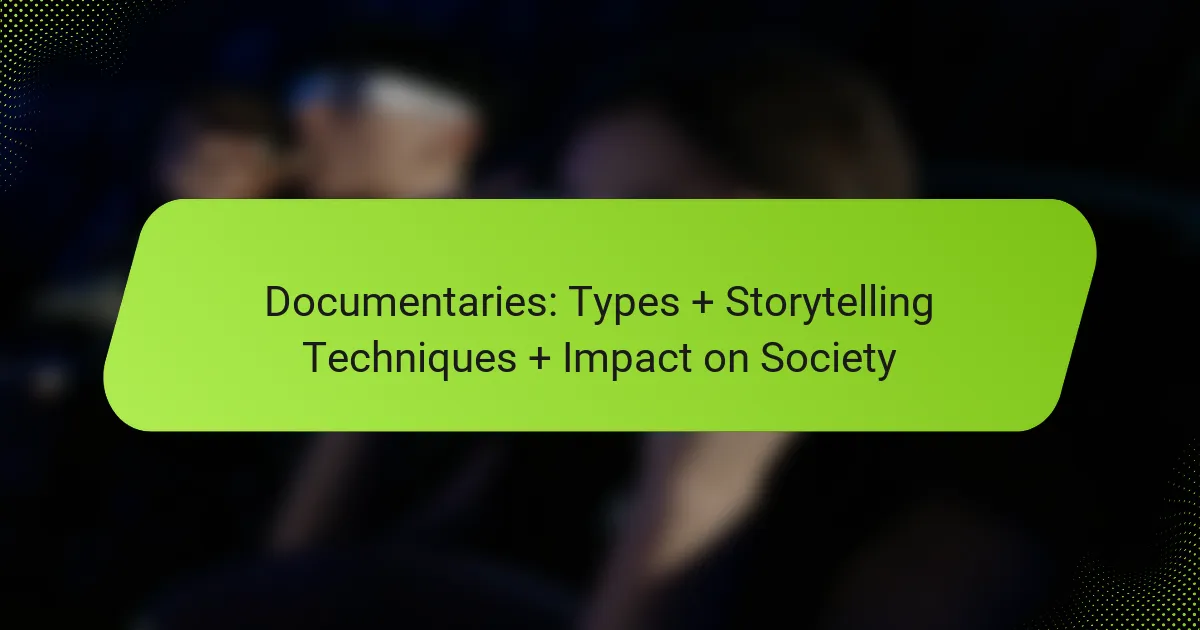
What are Animated Movies?
Animated movies are films created using animation techniques to produce moving images. They can be made through various methods, including traditional hand-drawn animation, computer-generated imagery (CGI), and stop-motion animation. Animated movies often appeal to a wide range of audiences, from children to adults. They can convey complex themes and emotions through visual storytelling. Notable examples include Disney classics like “The Lion King” and Pixar films such as “Toy Story.” The global animated film industry generated over $270 billion in revenue in 2021, showcasing its significant cultural impact.
How do Animated Movies differ from Live-Action Films?
Animated movies use computer-generated imagery or hand-drawn techniques to create characters and scenes. Live-action films rely on real actors and physical settings to tell a story. Animation allows for limitless creativity, including fantastical elements that are difficult to achieve in live-action. Live-action films often emphasize realism and human emotion through actual performances. Animated movies can target diverse audiences, appealing to both children and adults through layered storytelling. Live-action films frequently focus on [censured] themes and complex narratives. Animation can also be more cost-effective for certain types of productions, while live-action may require extensive sets and locations. The cultural impact of animated films often includes shaping childhood experiences and influencing popular culture, while live-action films may reflect societal issues and historical narratives.
What are the key characteristics of Animated Movies?
Animated movies are characterized by their use of animation techniques to create moving images. They often feature vibrant colors and imaginative worlds that captivate audiences. Animated films typically employ various styles such as 2D animation, 3D animation, and stop-motion. Storytelling in animated movies frequently includes themes of adventure, friendship, and personal growth.
Character design is crucial, as unique and memorable characters drive the narrative. Voice acting plays a significant role, bringing animated characters to life through expressive performances. Music and sound design enhance the emotional impact of scenes. Animated movies appeal to diverse audiences, ranging from children to adults, often containing layered humor and messages.
The global box office for animated films reached approximately $13 billion in 2019, showcasing their popularity and cultural significance.
What technological advancements have influenced Animated Movies?
Technological advancements have significantly influenced animated movies. The introduction of computer-generated imagery (CGI) transformed animation by allowing more detailed and realistic visuals. Pioneering films like “Toy Story” showcased the potential of 3D animation. Software such as Autodesk Maya and Blender enabled animators to create complex characters and environments. Motion capture technology has enhanced the realism of animated performances. Advances in rendering techniques have improved the quality of light and texture in animations. Streaming platforms have changed distribution methods, increasing accessibility for audiences. Virtual reality (VR) and augmented reality (AR) are emerging as new mediums for animated storytelling. These advancements continue to shape the evolution of animated films.
What are the different styles of Animated Movies?
The different styles of animated movies include traditional animation, 3D animation, stop-motion animation, and computer-generated imagery (CGI). Traditional animation uses hand-drawn techniques, often seen in classic films like “Snow White.” 3D animation employs digital models for a more realistic look, as seen in Pixar’s “Toy Story.” Stop-motion animation involves photographing physical objects in small increments, creating the illusion of movement, exemplified by “Coraline.” CGI combines computer graphics with animation techniques for dynamic storytelling, prevalent in modern blockbusters. Each style offers unique visual experiences and storytelling possibilities, contributing to the diverse landscape of animated cinema.
What are the major animation techniques used in Animated Movies?
The major animation techniques used in animated movies include traditional animation, 3D computer animation, stop-motion animation, and motion capture. Traditional animation involves hand-drawn images that are sequenced to create movement. This technique was widely used before the advent of digital technology. 3D computer animation utilizes software to create three-dimensional characters and environments. It allows for more realistic visuals and is the dominant technique in modern animated films. Stop-motion animation captures physical objects in a series of frames, creating the illusion of movement. This technique can be seen in films like “The Nightmare Before Christmas.” Motion capture records the movements of actors to animate digital characters, enhancing realism in animated features. Each technique contributes uniquely to the storytelling and visual style of animated movies.
How do artistic styles impact the storytelling in Animated Movies?
Artistic styles significantly impact the storytelling in animated movies by influencing visual aesthetics and emotional engagement. Different styles can convey various moods and themes effectively. For instance, a whimsical style may enhance humor, while a darker style can evoke tension or drama. The choice of colors, shapes, and animation techniques shapes audience perception and interpretation. Research shows that viewers often associate specific artistic styles with particular genres or narratives. For example, Pixar’s use of vibrant colors and fluid animation supports its family-friendly storytelling. In contrast, Studio Ghibli’s more detailed and naturalistic style often emphasizes environmental themes and complex characters. Thus, artistic styles are crucial in shaping the narrative experience and emotional resonance in animated films.
Who are the target audiences for Animated Movies?
The target audiences for animated movies include children, families, and adults. Children are often drawn to colorful characters and engaging stories. Animated films typically cater to their interests through humor and adventure. Families appreciate animated movies for their entertainment value and family-friendly themes. Many animated films also contain messages that resonate with all ages. Adults are increasingly becoming a significant audience for animated movies. They often enjoy films with deeper narratives and sophisticated humor. Movies like “Shrek” and “Inside Out” showcase themes that appeal to [censured] viewers. Overall, animated movies attract a diverse range of audiences across different age groups and interests.
What age groups are most commonly targeted by Animated Movies?
Animated movies primarily target children and family audiences. These films are designed to appeal to the imagination and interests of younger viewers. Typically, the primary age group targeted is between 5 and 12 years old. However, many animated movies also attract older audiences, including teenagers and adults. For example, Pixar and Disney films often include themes that resonate with all age groups. The success of animated films like “Shrek” and “Toy Story” demonstrates their broad appeal. Additionally, animated movies often incorporate humor and storytelling that engage both children and adults. This dual appeal is a significant factor in their popularity and commercial success.
How do cultural themes influence audience targeting in Animated Movies?
Cultural themes significantly influence audience targeting in animated movies. These themes shape the narratives, character development, and visual styles that resonate with specific demographics. For example, movies with themes rooted in specific cultures attract audiences who identify with those cultural backgrounds. Disney’s “Moana” incorporates Polynesian culture, appealing to viewers interested in that heritage.
Additionally, cultural themes can enhance relatability, making characters and stories more engaging for targeted audiences. Research indicates that culturally relevant content increases viewer connection and investment in the story. A study by the University of Southern California found that diverse representation in animated films leads to higher box office success.
Thus, cultural themes play a crucial role in determining which audiences animated movies aim to reach and how effectively they can engage them.

What is the Cultural Impact of Animated Movies?
Animated movies significantly influence culture by shaping perceptions and values. They often reflect societal norms and issues, making them relatable to diverse audiences. These films can promote cultural understanding by showcasing different traditions and lifestyles. For instance, Disney’s “Moana” highlights Polynesian culture, fostering appreciation and awareness. Animated movies also impact language development in children through engaging storytelling. According to a study by the American Academy of Pediatrics, children who watch educational animated content show improved vocabulary and comprehension skills. Additionally, animated films often address complex themes like friendship, love, and resilience, providing valuable life lessons. The global reach of animated movies allows them to transcend cultural barriers, creating a shared experience among viewers worldwide.
How do Animated Movies reflect societal values and issues?
Animated movies reflect societal values and issues by portraying themes relevant to contemporary culture. They often address topics such as friendship, family, and diversity. For example, films like “Zootopia” tackle issues of prejudice and acceptance. “Inside Out” explores emotional health and the complexity of feelings. These narratives resonate with audiences and provoke thought about societal norms. Research shows that animated films can influence children’s understanding of social issues. A study published in the Journal of Children and Media highlights how characters in animated movies shape perceptions of race and gender. Thus, animated movies serve as a mirror to society, illustrating its values and challenges.
What role do Animated Movies play in shaping cultural narratives?
Animated movies play a significant role in shaping cultural narratives. They convey complex themes and values through storytelling and visual art. These films often reflect societal norms and challenges, influencing public perception and understanding. For instance, Disney’s “Mulan” addresses gender roles and cultural identity. Animated movies can promote empathy by presenting diverse characters and experiences. They serve as tools for educating younger audiences about cultural histories and moral lessons. Research indicates that animated films can positively affect children’s attitudes towards different cultures (López et al., 2020, Journal of Cross-Cultural Psychology). Thus, animated movies are vital in constructing and evolving cultural narratives.
How do Animated Movies contribute to cultural diversity and representation?
Animated movies contribute to cultural diversity and representation by showcasing a wide range of characters and stories from various cultures. They often incorporate traditional folklore, myths, and values, which helps to educate audiences about different cultural backgrounds. Films like “Coco” highlight Mexican traditions, while “Moana” explores Polynesian culture. These narratives promote understanding and respect for diverse identities. According to a 2020 study by Dr. Karen McCracken, animated films with diverse casts lead to increased empathy among viewers. This representation can inspire underrepresented communities, providing role models and fostering a sense of belonging. Overall, animated movies play a crucial role in promoting cultural awareness and inclusivity.
What influence do Animated Movies have on children and families?
Animated movies significantly influence children and families. They provide entertainment while imparting valuable life lessons. Many animated films address themes such as friendship, courage, and empathy. Research indicates that children who watch animated movies develop better emotional intelligence. A study by the University of California found that kids learn moral values from characters’ experiences. Families often bond over watching these films together. This shared experience can enhance family communication and relationships. Animated movies also encourage creativity and imagination in children. They serve as a medium for discussing complex topics in an accessible way.
How can Animated Movies educate and inform young audiences?
Animated movies can educate and inform young audiences through storytelling, visual engagement, and relatable characters. They often incorporate moral lessons and cultural values. For instance, films like “Finding Nemo” teach about family and perseverance. Educational content is sometimes explicitly included, such as in “Sesame Street” adaptations. Animation can simplify complex topics, making them accessible for children. Research shows that animated content can enhance retention of information. A study by the University of California found that children learn better when information is presented visually. Animated movies can also introduce diverse cultures and perspectives, fostering empathy and understanding.
What are the psychological effects of Animated Movies on children?
Animated movies significantly influence children’s psychological development. They can enhance emotional understanding and empathy. For instance, characters often face challenges that teach resilience. Research shows that children who watch animated films exhibit improved social skills. A study by the American Psychological Association found that animated storytelling helps children process complex emotions. Additionally, animated films often promote positive values like friendship and teamwork. Exposure to diverse characters can improve cultural awareness. Overall, animated movies play a vital role in shaping children’s emotional and social growth.
What are the global trends in Animated Movies?
The global trends in animated movies include a rise in diverse storytelling and technological advancements. Animated films are increasingly featuring varied cultural narratives. This trend reflects a broader acceptance of global perspectives in cinema. Additionally, advancements in animation technology are enhancing visual storytelling. Techniques like 3D animation and virtual reality are becoming more prevalent. Streaming platforms are also driving demand for animated content. They provide access to a wider audience and promote original animated series and films. Furthermore, there is a growing focus on environmental and social themes in animated films. This aligns with global movements advocating for sustainability and social justice.
How do different cultures approach animation styles and storytelling?
Different cultures approach animation styles and storytelling in unique ways. For instance, Japanese animation often emphasizes emotional depth and complex narratives. This is evident in works like Studio Ghibli films, which blend fantasy with real-life themes. In contrast, Western animation frequently focuses on humor and entertainment aimed at children. Disney classics showcase this trend with their vibrant characters and straightforward plots.
Additionally, cultural values influence storytelling techniques. In African animation, oral traditions are often integrated, reflecting community stories and folklore. This can be seen in films like “Kirikou and the Sorceress,” which draws from West African tales.
Moreover, animation styles vary significantly. For example, the use of watercolor backgrounds in Japanese anime contrasts with the bold colors and clean lines of American cartoons. These stylistic choices often reflect cultural aesthetics and historical contexts.
Overall, the diversity in animation styles and storytelling approaches highlights the rich tapestry of global cultures. Each culture brings its unique perspective, enhancing the animation landscape.
What are the emerging markets for Animated Movies worldwide?
The emerging markets for animated movies worldwide include countries like China, India, and Brazil. China has rapidly increased its box office revenue for animated films, surpassing North America in recent years. India shows a growing demand for local animated content, driven by a young population and increased digital consumption. Brazil has also seen a rise in animated film production and viewership, supported by local studios and international collaborations. These markets are characterized by increasing investment in animation technology and storytelling. The global animation market is projected to reach $270 billion by 2025, highlighting the potential of these emerging regions.

How can one effectively engage with Animated Movies?
To effectively engage with animated movies, viewers should actively analyze the storytelling techniques used. This involves understanding character development, plot structure, and visual styles. Observing the animation techniques enhances appreciation for the artistry involved. Engaging with the themes presented can lead to deeper discussions about cultural impacts. Participating in community forums or social media discussions can also enrich the experience. Watching with friends or family can foster shared enjoyment and insights. Additionally, exploring behind-the-scenes content provides context about the creative process. Research shows that interactive viewing experiences can enhance viewer satisfaction and understanding.
What are the best practices for enjoying and analyzing Animated Movies?
To enjoy and analyze animated movies effectively, viewers should actively engage with the content. First, they should watch the film without distractions to fully appreciate the visuals and storytelling. Taking notes during the viewing can help capture immediate reactions and themes. After watching, discussing the film with others can provide different perspectives. Analyzing animation techniques, such as character design and color usage, enhances understanding. Researching the cultural context of the film can reveal deeper meanings. Viewing films from various genres broadens appreciation for the medium. Finally, revisiting favorite films can uncover new insights over time. These practices contribute to a richer experience and deeper analysis of animated movies.
How can viewers appreciate the artistry in Animated Movies?
Viewers can appreciate the artistry in animated movies by analyzing the visual style, storytelling techniques, and character development. The unique animation styles, such as 2D, 3D, or stop-motion, contribute to the overall aesthetic experience. Attention to detail in character design and backgrounds enhances immersion. Storytelling techniques, including pacing and emotional arcs, showcase the narrative depth. Character development allows viewers to connect with the protagonists and their journeys. Additionally, the use of color and sound design plays a significant role in conveying emotions. Understanding the cultural context and influences behind the animation can also deepen appreciation. Animated films like “Spirited Away” and “Toy Story” exemplify these artistic elements, demonstrating the medium’s potential for creativity and expression.
What tips can enhance the viewing experience of Animated Movies?
To enhance the viewing experience of animated movies, choose the right viewing environment. A dark room reduces distractions and helps focus on the visuals. Use a high-quality screen to appreciate the animation details. A larger screen can provide a more immersive experience. Ensure good sound quality with surround sound or quality speakers. This enhances the emotional impact of the film’s score and effects. Consider watching in a comfortable position to maintain engagement throughout the film. Watching with friends or family can also enhance enjoyment through shared reactions. Finally, select age-appropriate films to ensure the content resonates with the audience.
Animated movies are films created using various animation techniques, appealing to a broad audience range from children to adults. This article explores the different styles of animated movies, including traditional, 3D, and stop-motion animation, while highlighting their unique characteristics and storytelling methods. It also examines the target audiences for animated films, emphasizing their cultural impact and role in shaping societal values. Additionally, the article discusses how technological advancements and diverse cultural themes influence the animation landscape, contributing to its global trends and emerging markets.



